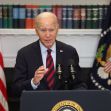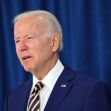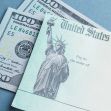The Biden Administration has announced that it will temporarily amend the rules regarding a federal student loan forgiveness program that was created to help public service workers.
Last Wednesday, the Education Department announced that the Federal Public Service Loan Forgiveness Program (PSLF) will see an overhaul in an attempt to allow more applicants to reap the program’s benefits.
What Is the Federal Loan Forgiveness Program?
PSLF was a federal loan forgiveness program established by Congress in 2007. The program aimed to encourage more people to go into public service like teaching by offering student loan forgiveness for those who remained in public service for at least 10 years.
Strict conditions applied for applicants to have their student loans forgiven, however. For starters, under the original rules of the program, applicants who had certain types of loans were not eligible for the program. Some of the loans included loans provided by the federal government. One of the most common loans that borrowers took out that were ineligible were the Federal Family Education Loans that were backed by banks.
In addition to having a qualifying loan, applicants had to make 120 payments toward their student loan debt. These monthly payments had to be certified by an eligible employer, and if a payment was late or not paid in full, then that payment did not count toward the payment requirement.
When applications for loan forgiveness were submitted in 2017, it became immediately clear that there was a problem with the program’s operations. Applicants express that they were giving misguided information when they first took out the student loans.
Not only were borrowers unaware that their loan types had to meet specific requirements, but some argued that they were misled into taking federally offered loans that did not qualify for the federal loan forgiveness program. To date, only 5,500 applicants have successfully had their loans forgiven.
What Are the New Changes to the Program?
The Education Department hopes to help clear up some of the confusion by temporarily adjusting the current rules. The changes will help scale back the requirements so that more individuals can apply for loan forgiveness. The Biden Administration hopes that these changes will have an immediate impact on at least 20,000 eligible public workers. It is estimated that this immediate eligibility will total roughly $1.7 billion in loan forgiveness. An additional 500,000 will be closer to having their student loans forgiven as well.
The Department of Education announced that individuals who apply before October 31, 2020, will be allowed to count monthly payments toward their loans that were not previously counted. Two distinct requirements have to apply, however.
The first is that borrowers who took out a Federal Family Education Loan backed by a bank must have their loans consolidated so that the new loan adheres to the existing federal loan program. Applicants have until October 2022 to have their loans consolidated.
Additionally, only loans taken out by students can be considered for loan forgiveness. Loans that were taken out by a student's parents under the Parent Plus Program remain ineligible.
The Future of the Public Service Loan Forgiveness Program
Although these changes are only temporary, the Biden administration plans to have a more detailed overhaul of the PSLF program. The temporary changes are made possible by the 2003 HEROES Act. Under this federal law, an agency is allowed to waive specific rules of a federal program in the event of a national emergency. The Biden administration has deemed the global pandemic to be a national emergency warranting the changes. During the early months of the pandemic, the federal government eased the burden of borrowers by deferring student loan payments. Those temporary changes will remain in effect for only one year and will cease to exist after October 2022.
In addition to allowing borrowers to have previously ineligible payments now count toward their participation in the program, borrowers will no longer have to get their payments certified by their employer. This certification used to take place to make sure that borrowers were still in public service.
The department has announced plans to create a database that will automatically track whether or not an individual is still in the public service industry. In addition to this database, the department has also vowed to create a review process that will check for errors in the application process. Through this overhaul for the future progress of the program, the department hopes that more borrowers will be able to take advantage of this student loan forgiveness program the way it was intended.






